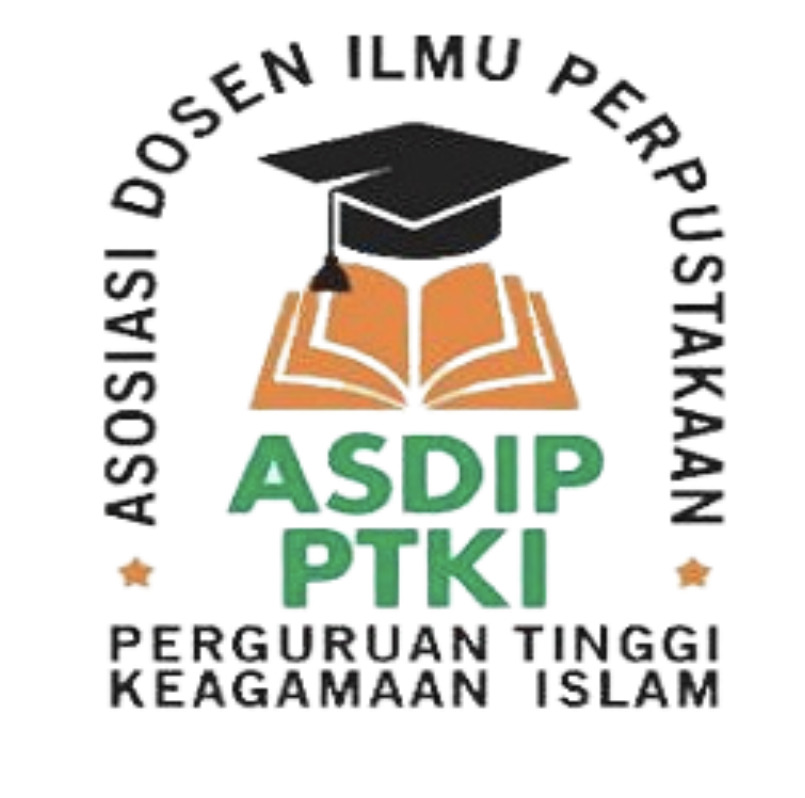Komunikasi Lisan Dengan Tatap Muka Dalam Era Teknologi Komunikasi Organisasi Di Perpustakaan IAIN Pontianak
DOI:
https://doi.org/10.29240/tik.v6i1.4071Keywords:
Oral Communication, Communication Technology, Organizational Communication, LibraryAbstract
Despite the rapid development of the quantity of devices and the quality of multifunctional communication media technology, it is not yet strong enough to completely replace the advantages possessed by face-to-face oral communication. This article aims to describe face-to-face oral communication in the era of organizational communication technology at the IAIN Pontianak Library. This study uses a descriptive qualitative approach, technical data collection using interviews, observation, and documentation. The results of the research findings are first, face-to-face oral communication applied at the IAIN Pontianak Library aims to convey information, regulations, and stimuli for work that takes place every day according to the situation in the library environment with formal and non-formal communication between the head of the library, coordinator and library staff. Second, the supporting factors for face-to-face oral communication are close space, feel more comfortable, have a sense of kinship, and establish friendship. Third, the inhibiting factors of face-to-face oral communication include being out of place, difficulty managing time, and language difficulties when communicating orally.
Downloads
References
Ahlidah, Jarmie, M. Y., & Aslie, Z. N. (2014). Peranan Komunikasi Petugas Perpustakaan Dan Pengguna Perpustakaan Dalam Meningkatkan Keberadaan (Eksistensi) Pada Perpustakaan Perguruan Tinggi Swasta Di Kota Banjarmasin. Jurnal Komunikasi Bisnis Dan Manajemen, 1(1). https://doi.org/DOI: http://dx.doi.org/10.31602/al-kalam.v1i1.66
Asni, D., & Irmayana. (2019). Pola Komunikasi Organisasi : Studi Kasus di PT Harian Amanah Al Haram. Al-Khitabah, 5(2), 49–63.
http://103.55.216.56/index.php/Al-Khitabah/article/viewFile/6841/5483
Asosiasi Penyelenggara Jasa Internet Indonesia. (2020). Laporan Survei Internet APJII 2019 – 2020. In Asosiasi Penyelenggara Jasa Internet Indonesia (Vol. 2020). https://apjii.or.id/survei
Brahmana, D. A. B., & Sitepu, E. (2020). Pola Komunikasi Organisasi Dalam Peningkatan Kinerja Pegawai Di Kantor Lurah Gung Leto Kecamatan Kabanjahe. Sosial Opinion: Jurnal Ilmiah Ilmu Komunikasi , 5(2), 96–104.
http://jurnal.darmaagung.ac.id/index.php/socialopinion/article/view/771/678
Daryono. (2018). Membangun Komunikasi Efektif Dalam Pelayanan Perpustakaan. Media Pustakawan, 25(2).
https://doi.org/https://doi.org/10.37014/medpus.v25i2.274
Fadhli, M. N. (2021). Strategi Komunikasi Organisasi Di Mis Azzaky Medan. Journal Ability: Journal of Education and Social Analysis, 2(2), 8–21.
http://www.pusdikra-publishing.com/index.php/jesa/article/view/139
Fahrizandi, F. (2020). Pemanfaatan Teknologi Informasi di Perpustakaan. Tik Ilmeu : Jurnal Ilmu Perpustakaan Dan Informasi, 4(1).
https://doi.org/10.29240/tik.v4i1.1160
Giddens, A., & Sutton, P. W. (2014). Essential Concepts in Sociology. Polity.
Griffin, R. W., Phillips, J. M., & Gully, S. M. (2020). Organizational Behavior: Managing People and Organizations (13th ed.). Cengage.
Hafizah, E., & Kusumayanti, F. (2020). Pola Komunikasi Organisasi Perempuan Di Kota Pontianak: Studi Kasus Pada Pusat Pengembangan Sumberdaya Wanita (PPSW) Borneo. ICRHD: Journal of International Conference On Religion, Humanity and Development, 1(1), 121–130.
https://confference.iainptk.ac.id/index.php/icrhd/article/view/16
Iffa, La Ode, Sumule Marsia, Kamil, S. U. R. (2017). Pola Komunikasi Pustakawan Dalam Meningkatkan Pelayanan Referensi Di Kantor Perpustakaan Daerah Pengolahan Data Elektronik Dan Arsip Kabupaten Wakatobi (Studi Kasus Di Perpustakaan Daerah Pengolahan Data Elektronik Dan Arsip Kec. Wangi-Wangi, Kabupaten Wa. Jurnal Penelitian Kajian Ilmu Komunikasi Dan Informasi, 2(1), 1–18.
Iskandar, D. (2021). Strategi Komunikasi Organisasi Dalam Membangun Loyalitas Kerja Pegawai. 1, 31–42.
https://doi.org/10.30596/persepsi.v
Laksmi, Sugihartati, R., & Salim, T. A. (Eds.). (2019). Antologi Kajian dalam bidang Ilmu Perpustakaan dan Informasi : Filosofi, Teori, dan Praktik. Ikatan Sarjana Ilmu Perpustakaan dan Informasi Indonesia.
Mahanani, F. P., Christanti, M. F., & Uljanatunnisa. (2020). Strategi Komunikasi Organisasi Fungsi HSSE PT Pertamina Patra Niaga Dalam Menjaga Citra Perusahaan. Jurnal Pustaka Komunikasi, 3(1), 100–111.
http://journal.moestopo.ac.id/index.php/pustakom/article/view/998
Moran, B. B., & Morner, C. J. (2018). Library and Information Center Management (9th ed.). Libraries Unlimited.
Mumby, D. K., & Kuhn, T. R. (2019). Organizational Communication: A Critical Introduction (2nd ed.). Sage.
Robbins, S. P., & Judge, T. A. (2017). Organizational Behavior (17th ed.). Pearson Education Limited.
Rogala, A., & Bialowas, S. (2016). Communication in Organizational Environments: Functions, Determinants and Areas of Influence. In Communication in Organizational Environments: Functions, Determinants and Areas of Influence. Palgrave Macmillan. https://doi.org/10.1057/978-1-137-54703-3
Ruliana, P. (2014). Komunikasi Organisasi : Teori dan Studi Kasus. Rajawali.
Subkhi, A., & Jauhar, M. (2013). Pengantar Teori & Perilaku Organisasi. Prestasi Pustaka.
Ustundag, A., & Cevikcan, E. (2018). Industry 4.0: Managing The Digital Transformation. Springer Nature.
https://doi.org/10.1007/978-3-319-57870-5
Visi, Misi, Tujuan dan Sasaran. (2021). https://perpus.iainptk.ac.id/visi-misi-tujuan-dan-sasaran/
West, R., & Turner, L. H. (2018). Introducing Communication Theory: Analysis and Application (6th ed.). McGraw-Hill Education.
Downloads
Published
Issue
Section
Citation Check
License
Authors who publish with Tik Ilmeu : Jurnal Ilmu Perpustakaan dan Informasi agree to the following terms:
- Authors retain copyright and grant the journal right of first publication with the work simultaneously licensed under a Creative Commons Attribution-NonCommercial-ShareAlike 4.0 International License (CC BY-NC-SA 4.0) that allows others to share the work with an acknowledgment of the work's authorship and initial publication in this journal.
- Authors are able to enter into separate, additional contractual arrangements for the non-exclusive distribution of the journal's published version of the work (e.g., post it to an institutional repository or publish it in a book), with an acknowledgment of its initial publication in this journal.
- Authors are permitted and encouraged to post their work online (e.g., in institutional repositories or on their website) prior to and during the submission process, as it can lead to productive exchanges, as well as earlier and greater citation of published work (See The Effect of Open Access).







 This work is licensed under a
This work is licensed under a 